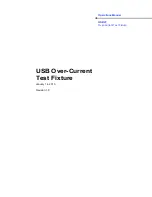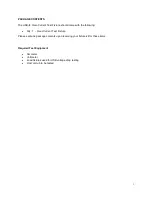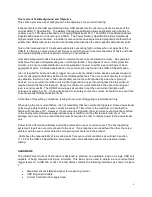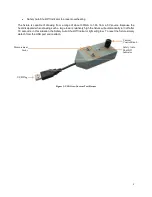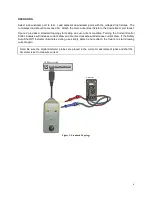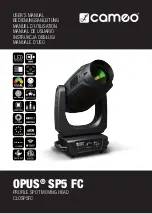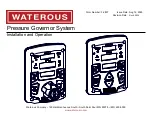
2
Over-current Test Background and Objective
This section provides a brief background on the objective of over-current testing.
Enhancements to the USB specifications allow USB peripherals to consume currents in excess of the
original USB 1.0 Specification. The Battery Charging specification allows peripherals with a battery to
consume up to 1.5A when attached to a Charging Downstream Port. The USB 3.0 Specification allows
SuperSpeed devices to consume up to 900mA. The Power Delivery Specification allows significantly
higher current to be consumed. In addition, some vendors have implemented proprietary methods that
enable their USB products to exceed current limits when attached to vendor specific downstream ports.
Due to the increased risk of ill behaved peripherals consuming high currents when not permitted, the
USB-IF is offering an Over-current Test Fixture to verify that over-current mechanisms of hosts and hubs
are handled properly and are reported correctly to host software.
Host and self powered hubs are required to implement over-current protection circuitry. Bus powered
hubs have the option of implementing over-current protection. The purpose of over-current protection
circuitry is to ensure a safe distribution and consumption of power on either a per port basis or as an
aggregate of ports. A detailed explanation of over-current can be found in the USB 2.0 Specification.
It is not required for host and hubs to trigger an over-current condition when devices surpass maximum
current consumption limitations defined in the USB specifications. The over-current circuitry is to report
any situation in which a host or hub cannot safely source the current pulled by a device or group of
devices. An over-current condition must not be triggered on any port sourcing less than the minimum
required current defined for that port. Above the minimum current limitations, the over-current trigger
level is vendor specific. The USB-IF encourages all vendors to set the over-current limitation with
purposes of safety in mind. If a downstream port can safely source the current, it should do so even if the
current exceeds USB specification limits.
At the time of this writing, compliance testing of over-current triggering is informational only.
When using the over-current fixture, it is not mandatory that over-current be triggered. Some downstream
ports may be able to safely source current in excess of 1.8A, which is the maximum current that the
fixture will consume at 5V. However, if over-current is triggered, the over-current event must be reported
to the host system software and appropriate power shutdown on the affected port must occur. No
damage can occur and no product repairs must be required in order to restore power to the downstream
port.
Power to the affected downstream port will be removed on an over-current event. The host operating
system will report an over-current event to the user. If one response occurs without the other, there is a
problem with the over-current detection or reporting mechanisms in the product.
Hosts have the responsibility of recovering ports from over-current conditions as outlined in section
11.12.5 of the USB 2.0 Specification. Re-enumeration of all affected ports must be observed when
testing.
HARDWARE
The USB-IF Over-Current Test Fixture is designed to produce an adjustable load on a single USB port
capable of being measured using an Ammeter. This load can be used to determine over-current fault
trigger levels on a USB hub or host. The test fixture contains the following interfaces as shown in Figure
1:
•
Measurement Jack (Banana-Type) for measuring current
•
USB Plug captive cable
•
Current Control Knob to adjust load

